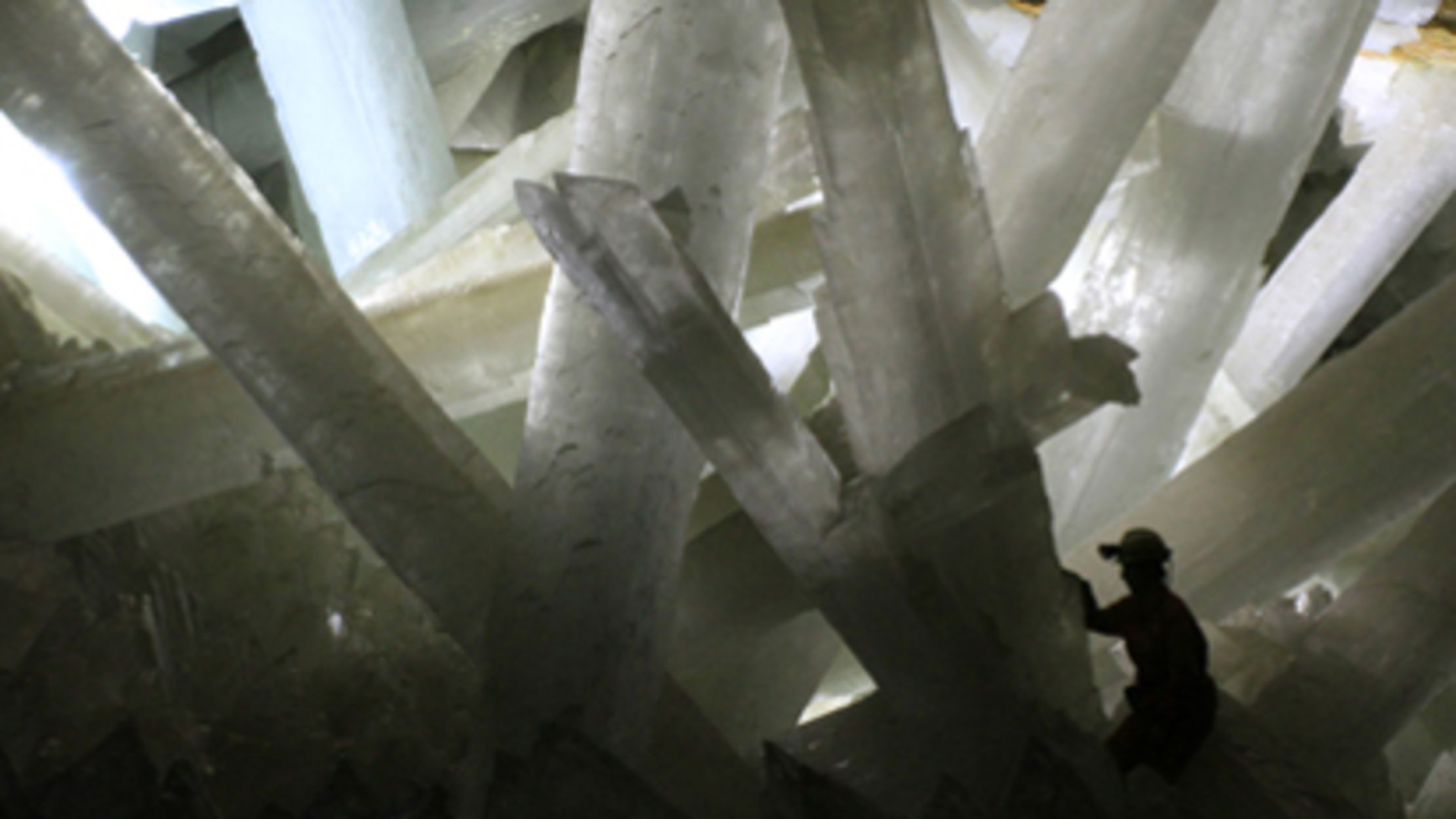
A stunning natural wonder lies beneath the Naica mountain range in Chihuahua, Mexico. The Cueva de los Cristales, also known as the Cave of Crystals, is a unique and fascinating geological formation that holds the largest known natural crystals in the world.
Discovery and Exploration

The Cave of Crystals was discovered in 2000 by miners who were drilling for lead and silver in the Naica mine. The miners accidentally broke into a previously unknown chamber filled with giant gypsum crystals. The conditions inside the cave were extreme, with temperatures reaching up to 58°C and humidity levels of around 100%. These conditions made it difficult for humans to explore the cave, but scientists were eager to study the crystals.
The Crystals

The crystals in the Cave of Crystals are made of gypsum, a common mineral that is usually found in small, white or gray crystals. However, the crystals in this cave are anything but small. Some of the crystals are over 12 meters long and weigh up to 55 tons. The crystals are also incredibly clear, allowing light to pass through them and creating a stunning visual effect.
Formation

The crystals in the Cave of Crystals formed over a period of around 500,000 years. The cave was filled with water that was saturated with gypsum, which slowly crystallized over time. The extreme conditions in the cave, including the high temperatures and humidity levels, allowed the crystals to grow to an enormous size.
Scientists and Research
[2].jpg?imgmax=800)
Despite the difficult conditions, scientists have been able to explore the Cave of Crystals and study the crystals inside. The cave is now a popular destination for geologists, mineralogists, and other scientists who are interested in learning more about the unique geological formations inside. However, the cave is still difficult to access and is not open to the general public.
Preservation

The Cave of Crystals is a fragile and delicate environment that requires careful preservation. The high humidity levels and extreme temperatures inside the cave mean that any changes to the environment could cause damage to the crystals. For this reason, access to the cave is restricted to scientists and researchers who have been granted permission to study the crystals.
Conclusion
The Cave of Crystals in Mexico is a truly unique and fascinating geological wonder. The crystals inside are some of the largest and clearest in the world, and scientists continue to study them in order to learn more about how they formed. While the cave is not open to the general public, its beauty and significance make it a must-see destination for anyone interested in geology and natural wonders.